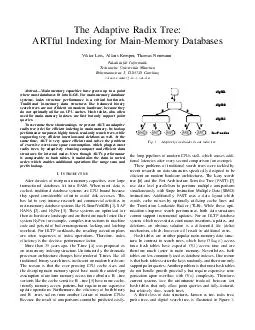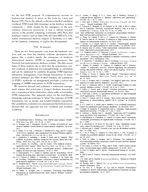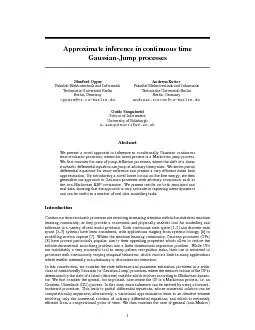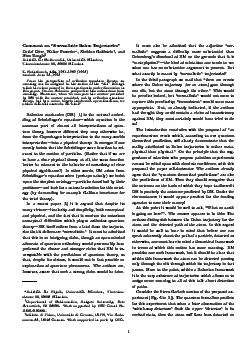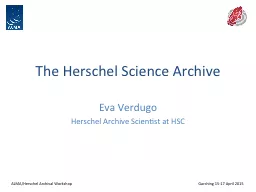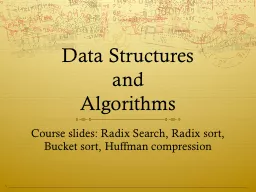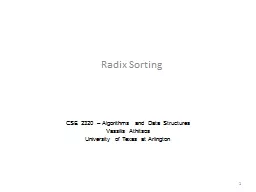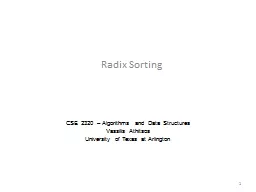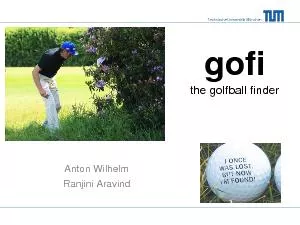PDF-The Adaptive Radix Tree ARTful Indexing for MainMemory Databases Viktor Leis Alfons Kemper
Author : olivia-moreira | Published Date : 2014-12-18
tumde Abstract Main memory capacities have grown up to a point where most databases 64257t into RAM For mainmemory database systems index structure performance is
Presentation Embed Code
Download Presentation
Download Presentation The PPT/PDF document "The Adaptive Radix Tree ARTful Indexing ..." is the property of its rightful owner. Permission is granted to download and print the materials on this website for personal, non-commercial use only, and to display it on your personal computer provided you do not modify the materials and that you retain all copyright notices contained in the materials. By downloading content from our website, you accept the terms of this agreement.
The Adaptive Radix Tree ARTful Indexing for MainMemory Databases Viktor Leis Alfons Kemper: Transcript
Download Rules Of Document
"The Adaptive Radix Tree ARTful Indexing for MainMemory Databases Viktor Leis Alfons Kemper"The content belongs to its owner. You may download and print it for personal use, without modification, and keep all copyright notices. By downloading, you agree to these terms.
Related Documents

